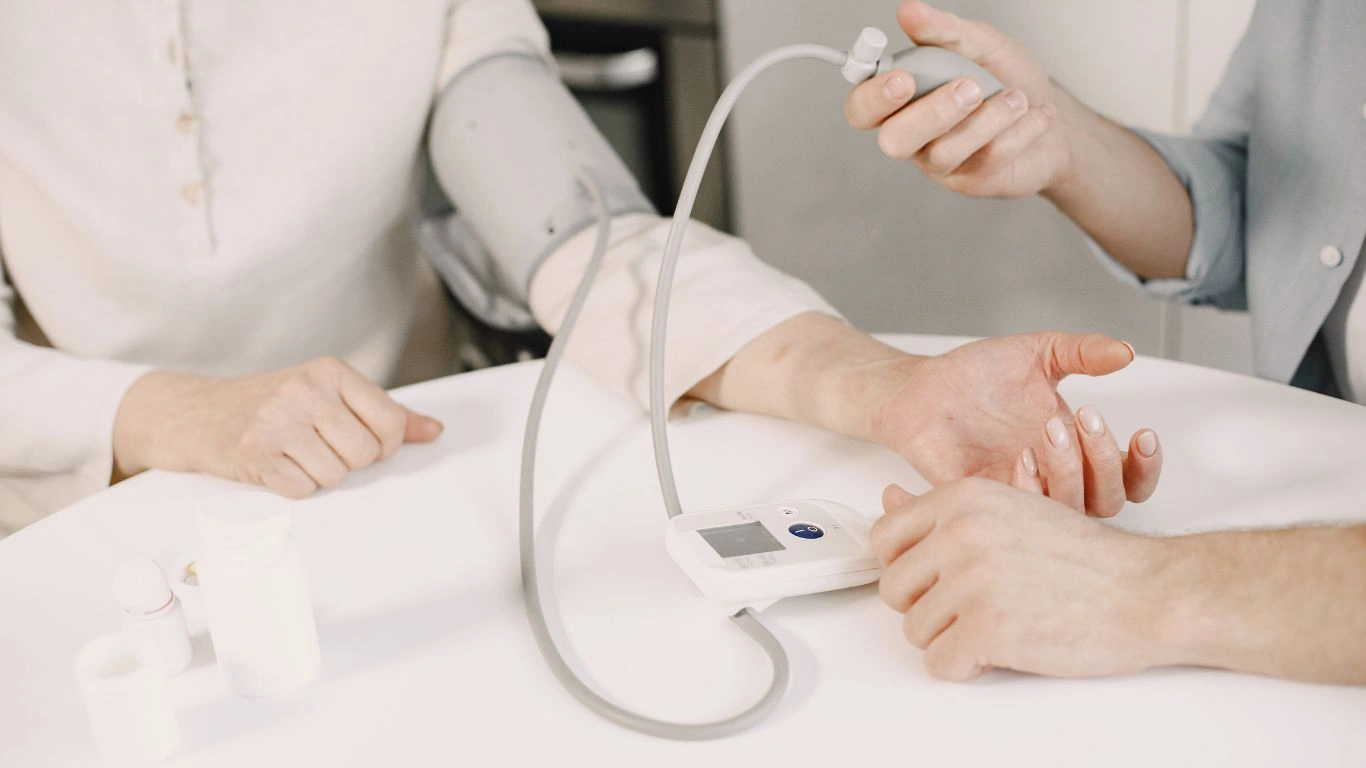Best Soups to Support Hypertension-Friendly Diets That Actually Work
If you’re managing high blood pressure, you probably already know how crucial it is to make smart food choices. As an Internal Medicine Physician specializing in hypertension management, I’m often asked what kind of meals actually support blood pressure control—and one of my go-to suggestions? Soups. Yes, the right kinds of soups can be hearty, nourishing, and surprisingly powerful allies in your health journey. So, if you’re looking for the best soups to support hypertension-friendly diets, you’ve come to the right place. Let’s dive into what makes a soup good—or not so good—for your heart and vessels.
Why Soups Deserve a Spot in a Hypertension-Friendly Diet

Now, I know soups might not be the first thing you think of when managing hypertension. But trust me, they can be game changers. They’re warm, comforting, and incredibly versatile. Plus, when made right, soups are a delicious way to get a boost of potassium, magnesium, fiber, and antioxidants—all key nutrients that help lower blood pressure naturally.
But—and this is a big but—not all soups are created equal. Those canned options lining the supermarket shelves? Most are swimming in sodium, preservatives, and mystery ingredients I wouldn’t recommend to my patients, let alone eat myself. That’s why homemade (or smartly chosen) soups are the real MVPs for people trying to keep their systolic and diastolic numbers in check.
The Big Sodium Trap (and How to Avoid It)
Here’s a little clinical insight I always share: sodium is sneaky. It’s not just in chips or processed snacks—it’s lurking heavily in most restaurant and store-bought soups. One “healthy looking” soup can contain 800–1,200 mg of sodium per serving. That’s half your day’s limit if you’re trying to keep it under 1,500 mg/day, which is the target we often aim for with patients managing hypertension.
So, when prepping your own soup, you’re in control. Use fresh herbs, lemon, garlic, and other spices to pump up flavor without the salt. Trust me, your taste buds will adjust—and thank you.
Top Ingredients to Use in Soups for Blood Pressure Control

Okay, let’s talk ingredients. When building your soup, these are the all-stars you want in your pot. They’re loaded with nutrients that specifically support cardiovascular health and help regulate blood pressure.
- Leafy Greens: Think kale, spinach, chard—these are rich in potassium and magnesium, essential for blood pressure control.
- Beans and Lentils: Full of fiber, plant-based protein, and minerals. Also very filling, which helps with weight control—another key piece of the hypertension puzzle.
- Tomatoes: High in lycopene and potassium. They’re also flavorful enough to reduce your need for added salt.
- Garlic: It’s more than a flavor booster—it’s got natural blood-pressure-lowering compounds (allicin being one of the heroes here).
- Whole Grains: Add barley, farro, or brown rice for a satisfying boost of fiber and complex carbs that don’t spike blood sugar.
Healthy Fats: Yes, You Need Some
We don’t demonize fats around here—at least, not the right ones. A splash of olive oil, a few chunks of avocado, or a sprinkle of seeds (like pumpkin or chia) can give your soup a smooth finish and offer anti-inflammatory benefits that are great for your cardiovascular system. Remember, healthy fat doesn’t raise your blood pressure—it can actually help lower it when used wisely.
Best Soups to Support Hypertension-Friendly Diets: A Few Tried-and-True Favorites

Let’s get into the actual soups now. These are recipes I’ve either made for myself or recommended to patients over the years. They’re easy to tweak, budget-friendly, and seriously tasty. You won’t miss the salt—I promise.
- Lentil and Kale Soup: Packed with iron, fiber, and protein. Add diced carrots, celery, garlic, and crushed tomatoes. A dash of cumin and a squeeze of lemon makes this one a hit even with picky eaters.
- Chickpea Tomato Stew: This one leans into Mediterranean vibes—think garlic, oregano, a hint of smoked paprika, and hearty chickpeas simmered with tomatoes and onion. Finish with olive oil and fresh parsley.
- Sweet Potato & Black Bean Soup: A warm, slightly sweet option that’s super comforting. Black beans bring protein and fiber; sweet potatoes are full of potassium and beta-carotene.
What I’ve Seen in My Practice
I’ve had patients who made just a few key changes—like swapping takeout or canned soups for fresh, homemade versions—and saw a noticeable drop in their blood pressure within weeks. Not kidding. One patient told me her “Sunday soup prep” became a ritual that replaced her salty snack habit, and she actually looked forward to it. That’s the kind of real-life transformation that fires me up as a doctor.
And look, it’s not about being perfect. It’s about building habits that support your health without making you feel deprived. Soups are warm, cozy, and full of potential. When you make them the right way, they’re kind of like a hug in a bowl—but with science-backed benefits.
What to Watch Out for: Common Soup Mistakes That Sabotage Blood Pressure Goals

Alright, so we’ve talked about the good stuff—now let’s shine a light on a few common slip-ups I see patients make when they’re trying to eat better but accidentally go sideways. Even well-intentioned soups can be little sodium bombs or sneaky sources of saturated fat if you’re not paying close attention.
- Using Bouillon Cubes or Store-Bought Broth: This one comes up all the time in my clinic. People assume it’s “just broth,” but one cube can have over 1,000 mg of sodium. That’s your whole day’s limit in a single ladle. If you can, go for low-sodium or better yet, make your own broth. It’s easier than people think and way more flavorful.
- Cream-Based Soups: I get it—creamy mushroom or chowder sounds amazing, especially in the winter. But full-fat dairy can raise saturated fat intake, which isn’t ideal for those trying to manage both blood pressure and cholesterol. There are great alternatives like cashew cream or pureed cauliflower that give a similar mouthfeel without the downside.
- Adding Too Much Processed Protein: Sausages, cured meats, and certain frozen meats are super salty. Instead, lean cuts of chicken, turkey, tofu, or legumes are all excellent low-sodium options that still pack protein power.
Pro Tip From My Own Kitchen
Here’s what I do when I want a cozy bowl of soup but I’m short on time: I toss some chopped veggies (like carrots, celery, zucchini), a can of no-salt-added beans, and a small handful of whole grains into a pot with garlic, turmeric, and a pinch of chili flakes. Then I pour in low-sodium veggie broth or just water, simmer for 30 minutes, and boom—healthy, flavorful soup. Add a squeeze of lemon or dash of apple cider vinegar to brighten it up. Simple, satisfying, and no blood pressure spike.
Meal Prep Tips: Making Hypertension-Friendly Soups Work for Your Busy Life

If you’re anything like my patients (or honestly, me), you don’t always have time to cook from scratch every day. That’s where batch-cooking soups really comes in handy. Make one big pot on Sunday, and you’ve got lunches or quick dinners ready for several days. Here’s how I coach folks to make soup part of their weekly rhythm without feeling like it’s just another chore.
- Pick 1-2 Core Veggies for the Week: This might be sweet potatoes and kale one week, and zucchini and carrots the next. Keep it simple so you don’t get overwhelmed.
- Rotate Protein Sources: Lentils one week, chickpeas the next. Tofu, tempeh, or shredded rotisserie chicken (skin off) can all keep things interesting and balanced.
- Use Herbs & Spices Generously: Flavor is key! Don’t be shy with fresh herbs, ginger, turmeric, black pepper, cumin, or coriander. These not only taste great but often carry their own health benefits, too.
- Portion and Freeze: Store individual servings in glass containers or freezer-friendly bags. Label them so you’re not guessing later. I always keep a few in the freezer for those hectic clinic days when I come home running on empty.
Serving Suggestions That Boost Nutrient Absorption
Okay, here’s a little doctor’s tip that might surprise you: how you serve your soup can actually affect how well your body absorbs the nutrients. For example, pairing iron-rich lentils with a squeeze of citrus (like lemon or lime) increases iron absorption thanks to the vitamin C. Or adding a tiny drizzle of olive oil helps your body soak up fat-soluble vitamins like A and K. Small tweaks, big impact.
More Soup Stars: Add These to Your Rotation

I get asked a lot, “What other soups do you eat, Dr. Gwenna?” So here’s a few more of my personal favorites that align perfectly with a hypertension-friendly diet. I’ve made these during residency, late-night hospital shifts, and cozy Sunday afternoons.
- Broccoli and White Bean Soup: Blended smooth or left chunky—either way, this is a creamy-tasting soup (without the cream!) that’s loaded with potassium and fiber. Add a touch of nutritional yeast for a cheesy vibe.
- Spiced Carrot and Lentil Soup: Warming, a little sweet, and super satisfying. Cumin, coriander, and a dash of cayenne give it depth. I love pairing this with a slice of whole-grain toast for dinner.
- Cabbage and Tomato Soup: I know cabbage isn’t everyone’s fave, but it’s cheap, underrated, and amazing for gut health. This soup is basically comfort food for your arteries. A splash of vinegar gives it a little kick.
How to Make Soup a Sustainable Habit
One of the biggest hurdles people face is consistency. It’s easy to be excited about a new recipe, but then life happens, right? My advice is to keep things simple. Pick a few go-to recipes you genuinely enjoy and make them often. Keep the ingredients on hand. Don’t stress if it’s not gourmet—your body doesn’t care if your soup looks pretty, just that it’s nourishing.
Also, involve your family or roommates. I’ve had patients turn soup night into a family event. Kids can help stir, pick veggies, or sprinkle herbs. When everyone’s involved, it becomes less of a task and more of a ritual. One patient of mine even told me her blood pressure was better not just because of what she ate—but because cooking soup relaxed her. That’s the kind of win I love to hear about.
Stick around because we’re just getting started—there’s so much more to unpack when it comes to optimizing your soup game for heart health.
Hydration & Sodium Balance: Why Soup Works So Well for Blood Pressure

Here’s something we don’t talk about enough—hydration. One reason I find soup so effective in a hypertension-supportive diet is that it’s naturally hydrating. That extra fluid helps your kidneys flush out excess sodium, which can lead to better blood pressure control over time. It’s a quiet, behind-the-scenes benefit, but it matters more than you think.
Most of us are walking around mildly dehydrated, especially my older patients. And that puts a strain on your vascular system. Soups, especially broth-based ones with potassium-rich veggies, help replenish fluids and electrolytes in a way plain water just doesn’t. It’s like you’re hydrating and nourishing at the same time—a double win.
Balancing Electrolytes Naturally
Another little clinical pearl: potassium and sodium work like a seesaw. When you eat more potassium (from foods like beans, greens, and squash), it can help your body excrete more sodium, which leads to better blood pressure regulation. Many of the best soups to support hypertension-friendly diets just happen to be potassium-rich by nature—without even trying.
Soups That Soothe Inflammation and Support Vascular Health

Let’s pivot for a sec and talk about inflammation. It’s a major driver of heart disease and high blood pressure—and it’s something we can influence through what we eat. Many soup ingredients (think garlic, ginger, turmeric, leafy greens, and legumes) have natural anti-inflammatory properties. So every time you grab that bowl of soup, you’re doing more than just lowering your sodium intake—you’re also dialing down systemic inflammation.
In fact, one patient of mine who had stubbornly high blood pressure despite being on meds started regularly eating turmeric-spiced lentil soup with spinach. Within a few months, not only did her blood pressure improve, but she reported fewer headaches and joint aches. Coincidence? Maybe. But likely not.
Anti-Inflammatory Power Ingredients to Add:
- Ginger: Great in carrot or sweet potato-based soups, this root can help reduce inflammation and improve circulation.
- Turmeric: Add a pinch of black pepper to help your body absorb curcumin, turmeric’s active compound.
- Leafy Greens: Not just for smoothies—chard, collards, and kale melt beautifully into warm brothy soups.
- Garlic & Onion: These guys aren’t just flavor builders—they also offer immune support and cardiovascular benefits.
It’s these subtle layers of support that make soups such a valuable tool in a blood pressure-lowering lifestyle. It’s not about one magic ingredient—it’s about the whole, nourishing picture.
Soup Pairings and Add-Ons That Keep It Interesting
Let’s be real—eating the same soup every week can get old fast. But the cool thing is, you can remix and layer your soups with fun toppings or sides to keep things interesting without compromising on your blood pressure goals.
- Try a swirl of plain Greek yogurt: Adds creaminess, protein, and a gut-health bonus (hello, probiotics!).
- Sprinkle hemp or pumpkin seeds: Great for texture, and they bring in magnesium and healthy fats.
- Serve with a side of whole grain toast or brown rice cakes: A light but satisfying carb pairing that keeps you full longer.
- Top with fresh herbs or microgreens: Not just pretty—they boost nutrition and flavor without any added sodium.
Real-Life Results: From My Patients to My Own Table
I’ve been in internal medicine long enough to see fads come and go, but this isn’t one of them. When people incorporate more homemade, heart-smart soups into their diets, they start noticing the difference. I’ve seen reductions in systolic readings by 10–15 mmHg in just a couple months. That’s huge—and it often means avoiding medication increases or even cutting back (under supervision, of course).
One of my own habits? I always keep frozen veggie scraps—carrot tops, celery ends, onion skins—and once I’ve got a full bag, I simmer them into a broth. It’s frugal, nutrient-rich, and makes an amazing base. Plus, it just feels good knowing what’s going into my food. That kind of kitchen mindfulness really does ripple out into better health outcomes.
Helpful Resources and Where to Learn More
If you want to dive deeper into how food can impact your heart and blood pressure, there are some great starting points out there. I always encourage folks to check out evidence-based sites and stay away from fad-heavy advice that doesn’t hold up in clinical practice.
- American Heart Association – for heart-healthy nutrition guides and recipes.
- National Heart, Lung, and Blood Institute – has solid resources on DASH (Dietary Approaches to Stop Hypertension).
- Academy of Nutrition and Dietetics – helpful for understanding label reading, sodium swaps, and meal planning.
Last Thoughts from the Clinic
If there’s one thing I’d want you to take away from this—it’s that eating well for blood pressure doesn’t have to be boring, complicated, or restrictive. Soups are a powerful and practical tool in your hypertension-friendly toolbox. They’re customizable, forgiving, and incredibly nourishing. Start small, stay consistent, and pay attention to how your body feels. You’ll be surprised how much power you hold in your own kitchen.
And if you’re already on medications—don’t worry, this isn’t about replacing them overnight. It’s about working with your body, alongside your treatment plan, and giving yourself every chance to thrive.
Disclaimer: The information shared in this article is based on my professional experience as an Internal Medicine Physician with a focus on hypertension management. It is intended for educational purposes only and does not replace individualized medical advice. Always consult your healthcare provider before making changes to your diet, medications, or lifestyle.

Dr. Gwenna Aazee is a board-certified Internal Medicine Physician with a special focus on hypertension management, chronic disease prevention, and patient education. With years of experience in both clinical practice and medical writing, she’s passionate about turning evidence-based medicine into accessible, actionable advice. Through her work at Healthusias.com, Dr. Aazee empowers readers to take charge of their health with confidence and clarity. Off the clock, she enjoys deep dives into nutrition research, long walks with her rescue pup, and simplifying medical jargon one article at a time.





